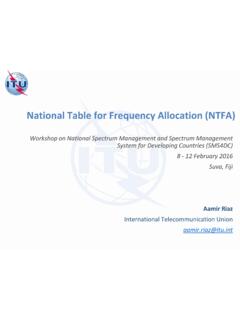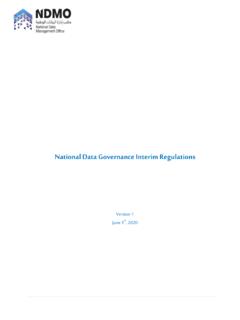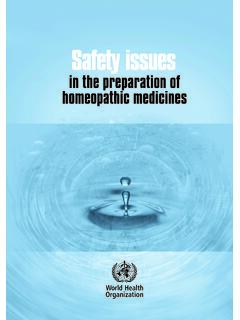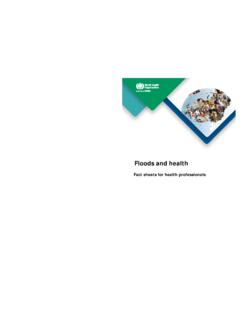Transcription of Why Working from Home Will Stick - National Bureau of ...
1 NBER Working PAPER SERIESWHY Working FROM HOME WILL STICKJose Maria BarreroNicholas BloomSteven J. DavisWorking Paper 28731 Bureau OF ECONOMIC RESEARCH1050 Massachusetts AvenueCambridge, MA 02138 April 2021We thank Stanford University, the University of Chicago Booth School of Business, Asociacion Mexicana de Cultura , the Stanford Institute for Human-Centered Artificial Intelligence, the Upjohn Institute for Employment Research, and Toulouse Network for Information Technology for financial support. We are grateful to comments from presentations at the AEA, Berkeley, CUNY, HAI, Hoover Institution, ITAM, LSE, Maryland, Munich, Rice, Northwestern, Ridge, Princeton, Stanford, Wharton, The World Bank, and ZEW-Mannheim.
2 We thank Corinne Stephenson for help generating our WFH media data. The views expressed herein are those of the authors and do not necessarily reflect the views of the National Bureau of Economic Working papers are circulated for discussion and comment purposes. They have not been peer-reviewed or been subject to the review by the NBER Board of Directors that accompanies official NBER publications. 2021 by Jose Maria Barrero, Nicholas Bloom, and Steven J. Davis. All rights reserved. Short sections of text, not to exceed two paragraphs, may be quoted without explicit permission provided that full credit, including notice, is given to the Working from Home Will StickJose Maria Barrero, Nicholas Bloom, and Steven J.
3 DavisNBER Working Paper No. 28731 April 2021 JEL No. D13,D23,E24,G18,J22,M54,R3 ABSTRACTCOVID-19 drove a mass social experiment in Working from home (WFH). We survey more than 30,000 Americans over multiple waves to investigate whether WFH will Stick , and why. Our data say that 20 percent of full workdays will be supplied from home after the pandemic ends, compared with just 5 percent before. We develop evidence on five reasons for this large shift: better-than-expected WFH experiences, new investments in physical and human capital that enable WFH, greatly diminished stigma associated with WFH, lingering concerns about crowds and contagion risks, and a pandemic-driven surge in technological innovations that support WFH.
4 We also use our survey data to project three consequences: First, employees will enjoy large benefits from greater remote work, especially those with higher earnings. Second, the shift to WFH will directly reduce spending in major city centers by at least 5-10 percent relative to the pre-pandemic situation. Third, our data on employer plans and the relative productivity of WFH imply a 5 percent productivity boost in the post-pandemic economy due to re-optimized Working arrangements. Only one-fifth of this productivity gain will show up in conventional productivity measures, because they do not capture the time savings from less Maria BarreroInstituto Tecnologico Autonomo de MexicoAv.
5 Camino a Santa Teresa #930 Col. Heroes de PadiernaCP. 10700. Alc. Magdalena BloomStanford UniversityDepartment of Economics579 Serra MallStanford, CA 94305-6072and J. DavisBooth School of BusinessThe University of Chicago5807 South Woodlawn AvenueChicago, IL 60637and 1 1. Introduction COVID-19 triggered a mass social experiment in Working from home (WFH). Americans, for example, supplied roughly half of paid workhours from home between April and December 2020, as compared to five percent before the This seismic shift in Working arrangements has attracted no shortage of opinions about whether WFH will Stick .
6 Netflix CEO Reed Hastings offers one view: I don't see any positives. Not being able to get together in person, particularly internationally, is a pure negative. At the other end of the spectrum, Rite Aid CEO Heyward Donigan reports, We have adapted to work-from-home unbelievably We ve learned that we can work remote, and we can now hire and manage a company remotely. Apple CEO Tim Cook expresses an intermediate view, In all candor, it s not like being together [But] I don t believe that we ll return to the way we were because we ve found that there are some things that actually work really well virtually.
7 2 We develop systematic evidence about whether WFH will Stick , why, and some of the economic and societal implications. To do so, we exploit multiple waves of data from an original cross-sectional survey of our design the Survey of Working Arrangements and Attitudes (SWAA). We have fielded the survey about once a month since May 2020, thus far collecting over 30,000 responses from Working -age Americans. We ask about Working arrangements during the pandemic, personal experiences with WFH, worker preferences and employer plans about the extent of WFH after the pandemic ends, attitudes about contagion risks and vaccination, and much Our survey data track the incidence of Working from home and provide insights into how a persistent shift to WFH will affect worker well-being, productivity, commuting time, spending near business premises, and sales tax revenues in large cities.
8 Our data also throw new light on desires to work remotely, the stigma associated with WFH, lingering concerns about Working or commuting in close proximity to others, and more. To supplement our analysis of the survey data, we draw on informal conversations with dozens of business executives. 1 Drawing on several independently conducted surveys, Barrero et al. (2020), Bick et al. (2020), Brynjolfsson et al. (2020), and Ozimek (2020) find that about half of paid workhours were supplied from home in the Spring of 2020. Figure 1 below shows the WFH share from May 2020 to March 2021. 2 The quotations are from Cutter (2020).
9 3 Our data are available to other researchers at We continue to field the SWAA and update the website about once a month. 2 Forty percent of SWAA respondents aged 20-64 worked from home in May 2020, while 26 percent worked on business premises and just over a third did not work. Figure 1 shows, accordingly, the share of full paid Working days worked home exceeded 60 percent in May. The incidence of WFH fell steadily from May to late October, before rebounding in November as the pandemic worsened and government authorities re-imposed some restrictions on commercial and social activities. As of March 2021, employees supplied about 45 percent of paid labor services from home.
10 In comparison, workers supplied only 5 percent of full workdays from home in 2017-2018 (BLS, 2018). The share WFH three or more days per week rose from in 1980 to in 2010 (Mateyka et al., 2012) and in 2018 (BLS, 2018).4 Thus, the huge COVID-induced shift to WFH follows a slow, modest rise over the previous forty years. The SWAA puts the following question to employed respondents: After COVID, in 2022 and later, how often is your employer planning for you to work from home? According to the responses, employers plan for workers to supply ( ) percent of full workdays from home after the pandemic ends.
















